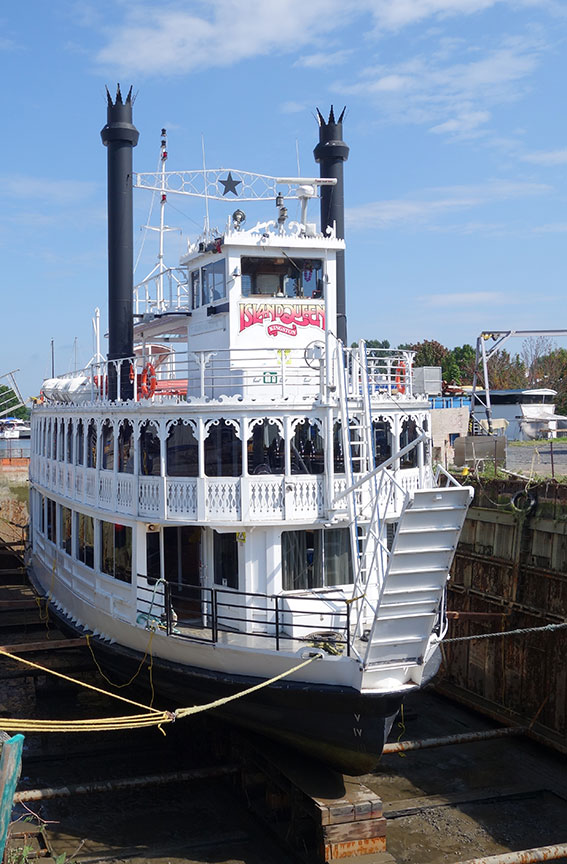Bottom contact and subsequent flooding
Passenger vessel Island Queen III
Kingston, Ontario
The occurrence
On 08 August 2017, at approximately 1246 Eastern Daylight Time, the passenger vessel Island Queen III, with 279 passengers, 10 crew members, and an entertainer on board, was on a 3-hour cruise in the Thousand Islands area of the St. Lawrence River when it made bottom contact off Kingston, Ontario. Shortly after departure, the vessel had deviated from its planned route to avoid a fleet of sailing dinghies causing it to travel north of its intended track. The vessel’s position was being monitored solely by visual navigation. Although other sources of information and methods of navigation were available, none of these were used to cross-check the visual navigation, allowing the inaccuracy of the navigation to go undetected.
The vessel sustained damage that resulted in the flooding of the steering compartment. The vessel was able to return to the dock without assistance. No injuries or pollution were reported. The TSB investigation into this occurrence revealed safety deficiencies that led the Board to issue 3 safety concerns.
Safety communication
Marine Safety Advisory Letter No. 02/18: Safety Issues on Passenger Vessels Navigating in the Thousand Islands Area
Media materials
News release
TSB issues three safety concerns following bottom contact of the passenger vessel Island Queen III near Kingston, Ontario in 2017
Read the news release
Deployment notice
TSB deploys a team of investigators following the grounding of a passenger vessel near Fort Henry, Kingston, Ontario
Québec, Quebec, 9 August 2017 — The Transportation Safety Board of Canada (TSB) is deploying a team of investigators to Fort Henry, Kingston, Ontario, following the grounding of the passenger vessel Island Queen III. The TSB will gather information and assess the occurrence.
Investigation information
Download high-resolution photos from the TSB Flickr page.
Class of investigation
This is a class 2 investigation. These investigations are complex and involve several safety issues requiring in-depth analysis. Class 2 investigations, which frequently result in recommendations, are generally completed within 600 days. For more information, see the Policy on Occurrence Classification.
TSB investigation process
There are 3 phases to a TSB investigation
- Field phase: a team of investigators examines the occurrence site and wreckage, interviews witnesses and collects pertinent information.
- Examination and analysis phase: the TSB reviews pertinent records, tests components of the wreckage in the lab, determines the sequence of events and identifies safety deficiencies. When safety deficiencies are suspected or confirmed, the TSB advises the appropriate authority without waiting until publication of the final report.
- Report phase: a confidential draft report is approved by the Board and sent to persons and corporations who are directly concerned by the report. They then have the opportunity to dispute or correct information they believe to be incorrect. The Board considers all representations before approving the final report, which is subsequently released to the public.
For more information, see our Investigation process page.
The TSB is an independent agency that investigates air, marine, pipeline, and rail transportation occurrences. Its sole aim is the advancement of transportation safety. It is not the function of the Board to assign fault or determine civil or criminal liability.
